Enjoy your Lightswing® right away
So you have time to think about it
We'll prepare your order the same day
Enjoy your Lightswing® right away
So you have time to think about it
We'll prepare your order the same day
Spring isn’t just a season, it’s a feeling. That moment the sun hits your sofa just right, your windows stay open longer, and everything in your home suddenly feels… ready for change. Whether you’re swapping cushions or rethinking your lighting, now’s the time to add some fresh energy to your space.
Here are 5 easy interior trends that will bring the season inside:
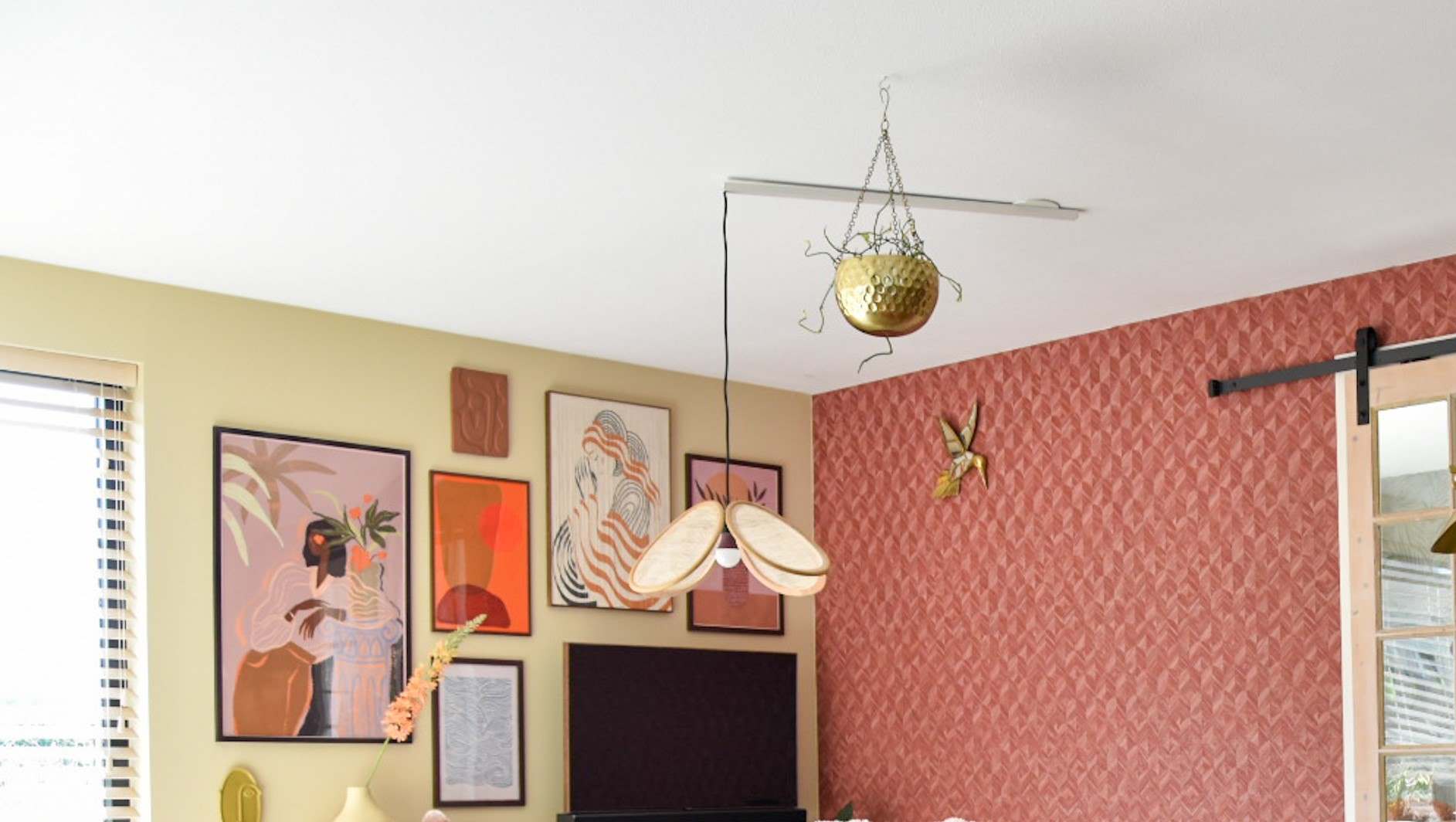
Think soft lilac, mint green, butter yellow or blush, but paired with warm neutrals like beige, greige, or even black. This combo keeps things fresh without turning your home into an ice cream parlour.
Feeling bold? Swap your pendant for a pastel-coloured lamp. Thanks to Lightswing®’s quick-release system, you can do that in seconds. New season, new vibe, no electrician needed.
Rattan, light wood, linen and glass are stealing the spotlight. Not only do they reflect more light, but they instantly make a room feel airier and more open.
Try replacing heavy lampshades with a lighter one, it changes the whole feel of your space. And if you’ve got a Lightswing®, you know how easy that swap is.
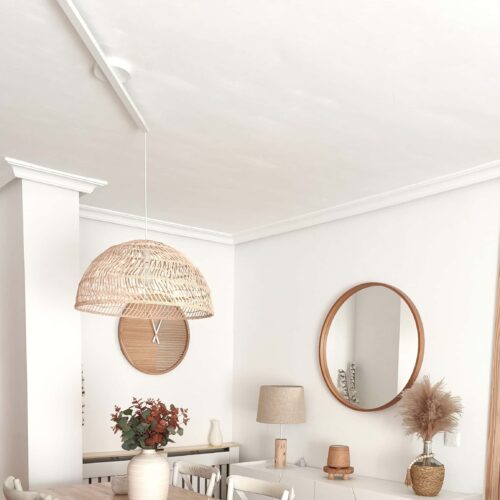
Say goodbye to hard edges, spring 2025 is all about soft shapes. From round mirrors to curved sofas and organic coffee tables, this trend brings comfort and a more relaxed energy to your space.
Pro tip: Combine a curved dining table with a centrally placed pendant lamp, easily adjusted left or right thanks to your Lightswing®. Balance, sorted.
Yes, yellow is back, but keep it as an accent. A candle, a vase, or even a cheeky touch in your pendant cord. Yellow brings a dose of optimism, just what spring calls for. Right?
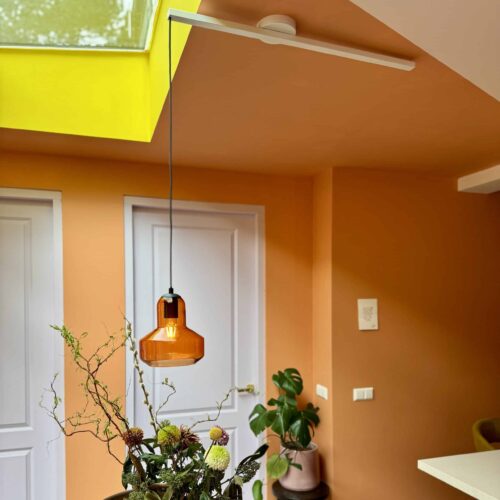
Dried flowers, leafy plants, even mini herb pots in your kitchen, nature-inspired interiors are still blooming this year. They add texture, life, and a bit of calm to your space.
No green fingers? A fresh bunch of tulips on the table under a beautifully styled pendant will already do the trick.
Trends come and go, but your home should always reflect you. So pick what speaks to you, mix it up, and don’t be afraid to play. With Lightswing®, your interior stays flexible, just like your style.
Let the light in, and let spring do its thing.
In this blog, we invite you to take a peek inside Ellen’s home, where she lives with her partner Michel and their two teenage sons. Discover how the Lightswing® has brought a fresh twist to their interior and how its flexibility perfectly complements their vibrant household.
Social @el_kedageenfeestje
Interior Style Oh, that’s always tricky to describe. My clothing style is full of contrasts—sweet mixed with edgy—and maybe my interior style reflects that too. Pink is a recurring theme throughout my home, but I love pairing it with bold black details.
Ellen’s Interior Tip I used to love having colorful walls, but now I prefer a calmer base with pops of color in the accessories. For interior enthusiasts like me, who enjoy a bit of change, this makes it super easy to give your home a fresh look by simply swapping out accessories.
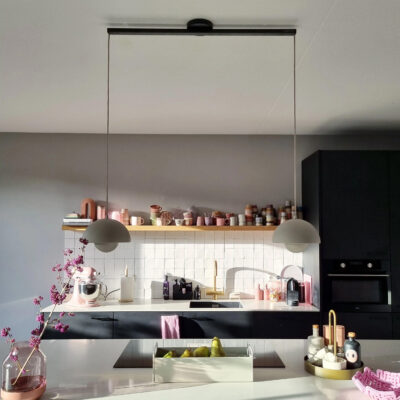
Is your Lightswing® no longer rotating? Then your Lightswing® has gotten stuck in the spin-through protection. You can get the Lightswing® loose by turning it the other way. But which way was that again? We have created a handy too
l for you so you can enjoy flexible pendant lights again in no time.
To prevent damage to the cords of the Lightswing®, it comes with a spin-through protection. This is activated when the Lightswing® is repeatedly turned in the same direction when being moved. Over time, this can cause the Lightswing® to become completely stuck.
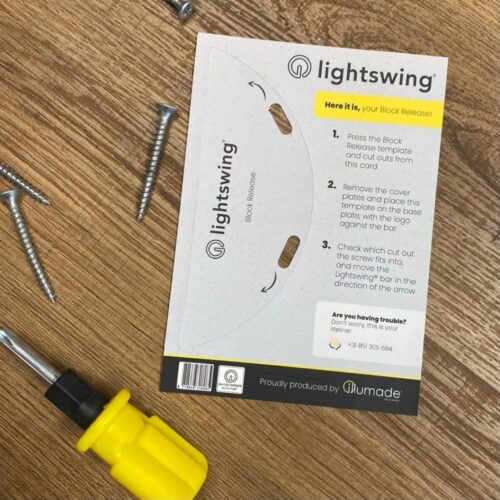
Using the Block Release, you can easily rotate your Lightswing® freely again. In the PDF below you will find the Block Release with simple instructions. Print it out and follow the steps carefully to quickly enjoy your flexible pendant lights again.
Download your Block Release here!
Can’t get the Lightswing® moving again using the Block Release? We are happy to think with you.
Sustainability is an important topic that you see more often. But what exactly is sustainability? And what steps is Lightswing® taking in the field of sustainability? We will give you an explanation of the question in this blog.

Sustainability is often explained based on the 3 Ps of People, Profit and Planet. In short, sustainability means that people, the economy and nature are in balance. This so that the earth is not depleted. Living more sustainably, but also doing business more sustainably, therefore helps to save our living environment for future generations.
Lightswing® also contributes to a more sustainable world. For example, we have ensured that the Lightswing® is 100% recyclable, that as little plastic as possible is used in the Lightswing® packaging and that the shipment of the Lightswing® ensures less CO2 emissions than faster, but less sustainable alternatives. Are you reading along?
At the beginning, a few pieces of plastic packaging could be located in the Lightswing® box that you as a customer received at home. That is no longer the case. The plastic packaging of the mounting ring and the covers have been replaced by cardboard boxes made of FSC-certified cardboard. The Lightswing® itself was also delivered in plastic packaging. But that plastic packaging has now been replaced by a black fabric cover. This fabric cover can be stored and is ideal for reuse! Here you can, for example, transport or store other objects. Like your tent poles, which you normally always lose, for example! 😉
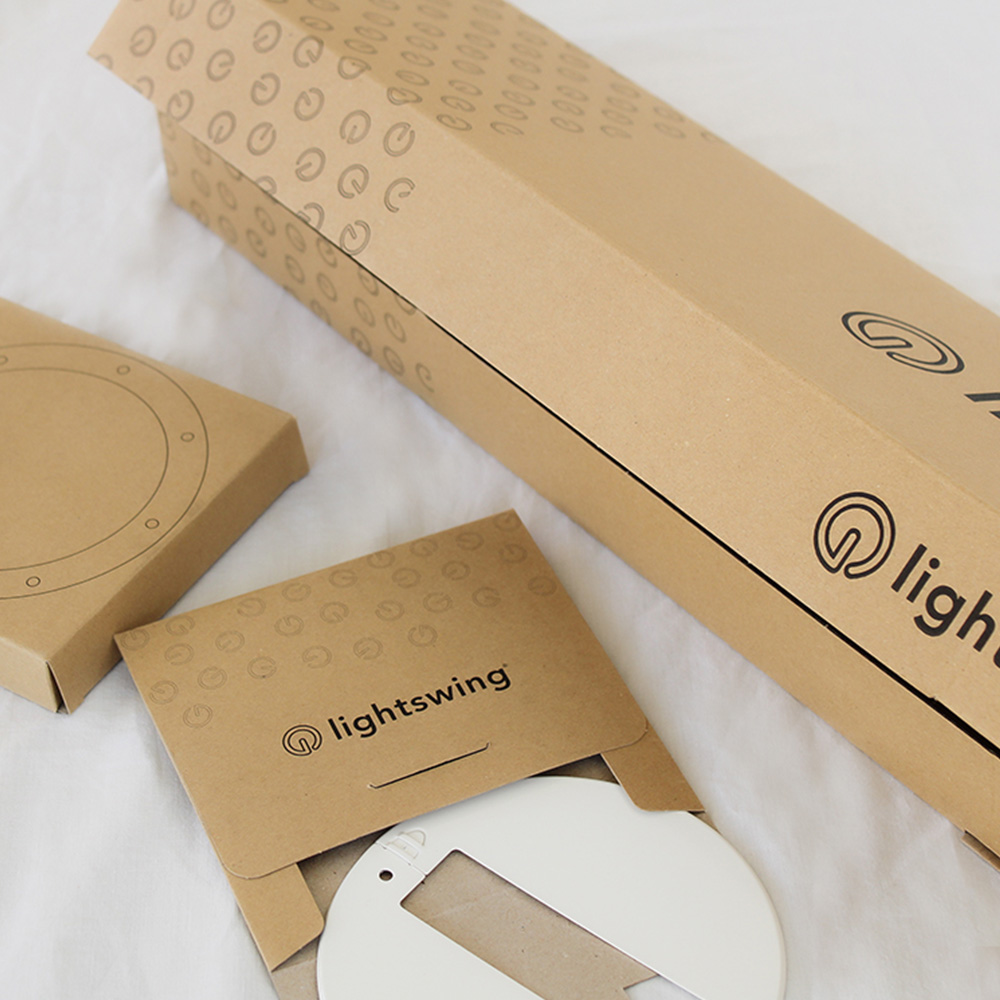
Lightswing®’s products are transported to the Netherlands by boat. This takes longer than when the products are transported in a truck or by plane. But, on the other hand, it also causes less CO2 emissions. With a little patience and good planning, we ensure that we have enough Lightswings® in stock, so that you do not have to wait long.
In both old and new houses, you can regularly find an ornament or rosette on the ceiling. An ornament or rosette is often located in the middle of the room and lends itself as an ideal place where you can hang a beautiful pendant lamp. But what is the best way to attach a pendant lamp to an ornament?
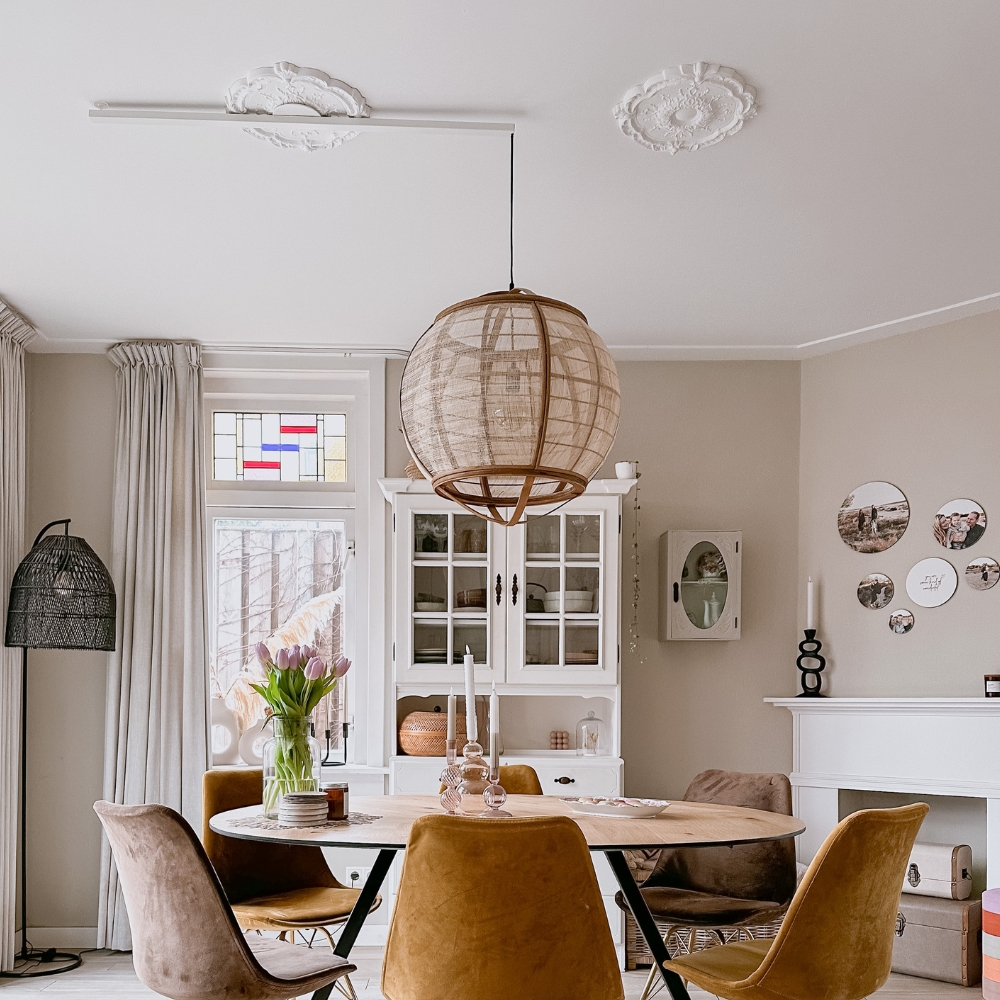
An ornament on the ceiling gives a room a classic and romantic look. By attaching the pendant light to the ornament, a luxurious look is created in which the ornament and the pendant light really catch the eye.
But an ornament is often located in the centre of the room. And what if that’s not the place where you want to hang a pendant light No worries! With the Lightswing® suspension system it is possible to hang the lamp next to the ornament, without loose cables or a sloppy finish.
With the help of the Lightswing® you can attach the pendant light next to the ornament, without loose cables hanging from the ornament. You can attach the Lightswing® suspension system to the ornament if there is a designated connection point for your lightning.
You first attach the mounting ring to the ornament. Then attach the Lightswing® to the mounting ring. With the mounting ring you ensure that sufficient distance is kept between the ornament and the Lightswing®. This allows the Lightswing® to move along the ornament, without damaging it.
So, do you want a pendant light in the right place and at the same time do you want to put the classic elements of your ceiling in the spotlight? Then choose the Lightswing®. Discover everything about the Lightswing® and attaching the Lightswing®.
Beautiful, isn’t it? Lots of natural light in the living room or dining room through that beautiful skylight. During the summer, a skylight brings in additional light to spaces. In contrast, during autumn and winter, a skylight becomes a nice addition. However, during this period there is significantly less natural light entering the interior. It would be beneficial to have an additional light source in this area during these seasons. But how can you conveniently install a lamp in this location?
The obvious solution is to place a lamp on the ceiling, just next to the skylight. That is certainly possible, but when your dining table is exactly in the middle under the skylight, that lamp does not hang directly above it.
And how nice would it be if you could just hang the pendant lamp nicely in the middle, without having to put a lot of effort into it?
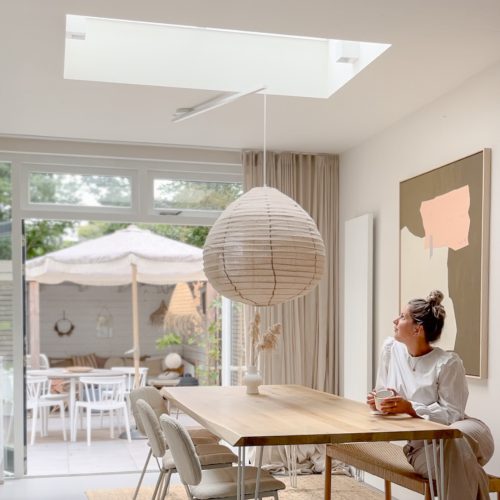
Hanging your lamp under a skylight is easy with the Lightswing®. With the Lightswing® suspension system for lamps, you are a lot less dependent on the original location of the light point. In addition, you create many more possibilities to hang lamps, where there is currently no light point. Like under the skylight, for example.
The flexible suspension system connects you to the current light point on your ceiling. You attach the pendant light to the end of the Lightswing®, so you can move it to another place later. Depending on which Lightswing® you choose, your pendant light can be moved up to 93 cm from this attachment point. The system is attached to the ceiling at one point and can also rotate and slide freely so, you can also slide the lamp to a place where there is no ceiling above.
The Lightswing® suspension system can be used with one or two pendant lights. In addition, you can choose from 3 colours and 2 lengths. Curious about where else a Lightswing® can come in handy? Visit our inspiration page and find out!
Hang a pendant light in seconds. This is possible with the Lightswing® on your ceiling. Huh? Yes, really! You’ll never be messing around in the air hanging a lamp again. And that saves time and annoying situations.
First things first. To be able to hang a lamp without difficulty, it is useful to attach a Lightswing® to your ceiling. Then you can use this hanging system for pendant lights – with one click! – hang a new lamp. Curious how that works exactly? Read on!
After the Lightswing® hangs, attach the lamp to the Quick Release. This Quick Release is an intermediate piece that you can easily click into the Lightswing®. And as the name ‘Quick’ says, attaching your lamp to the Lightswing® is nice and fast. Handy, right?
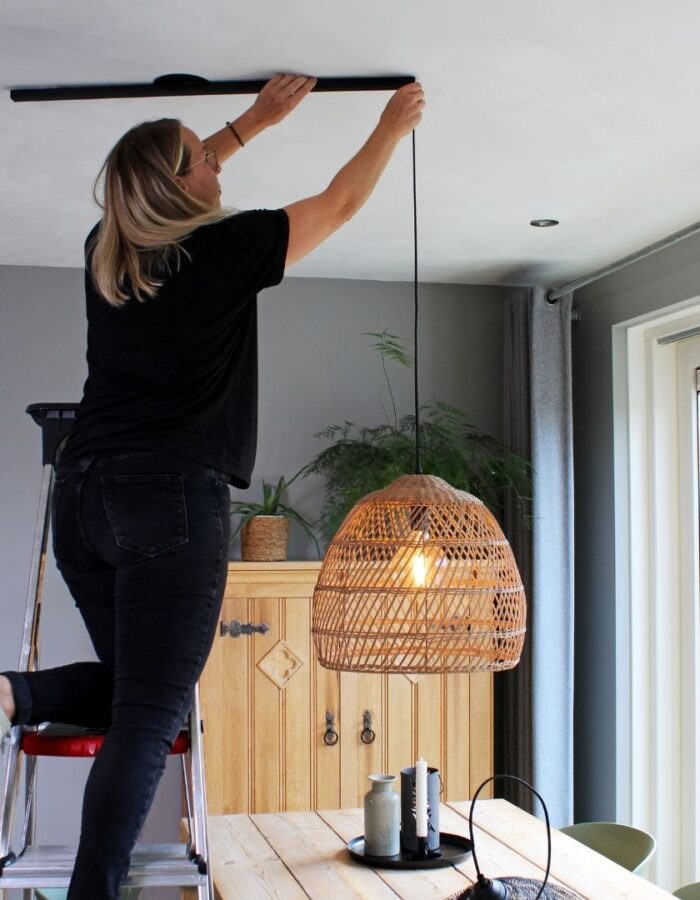
You can ‘mount’ your lamp to the Quick Release while sitting at the kitchen table. That saves fumbling on the stairs with your hands full of tools. In the step-by-step plan below you can read how attaching the lamp to the Quick Release works:
Watch the video ‘attaching a lamp cord to the Lightswing®‘ to see what the above steps look like.
Have you attached the lamp cord to the Quick Release? Beautiful! Then it’s time to hang your lamp on the Lightswing®. This time with a lamp, go up the stairs. Hassle with wires and screwdrivers is no longer an issue. You slide the Quick Release into the end of the Lightswing® and voilà: your lamp hangs!
Do you want to temporarily remove the lamp because it hangs in the way? That too is quickly done! Disconnect the Quick Release from the Lightswing® and store your lamp. Shop your Lightswing® now!
During the assembly of the Lightswing® you must make a choice whether you use the mounting ring or not. Curious when you use or do not use the mounting ring when mounting the Lightswing®? We explain it to you in this blog.
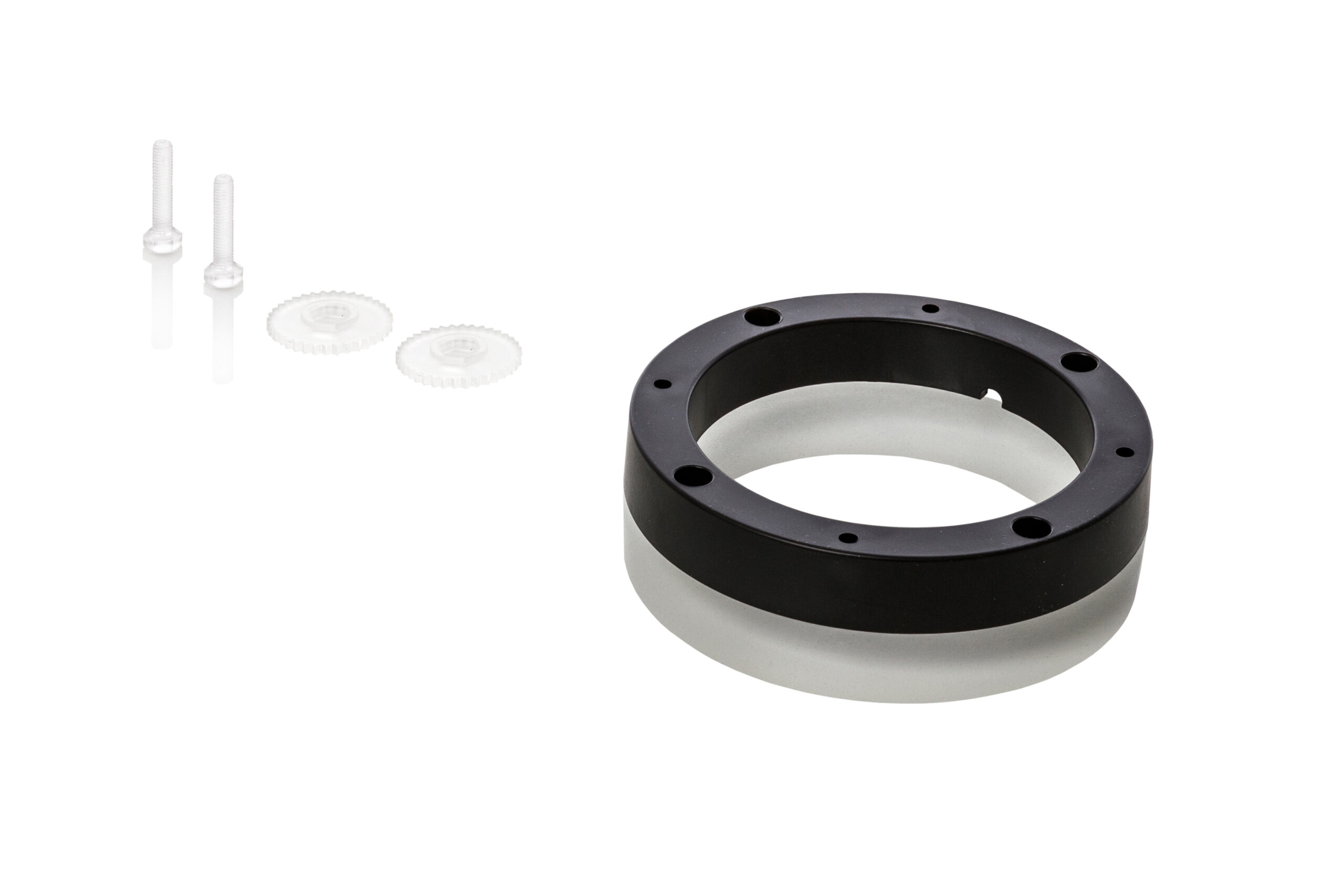
Mounting location of the Lightswing®
Whether or not you should use the mounting ring depends, among other things, on the place where you want to attach the Lightswing®.
Lightswing® over a central box
If you want to attach the Lightswing® to the place where the current central box is located, you do not need the mounting ring. The Lightswing® can be mounted tightly to the ceiling. The electricity cables and crown stones can easily be hidden in the central box.
Lightswing® over a cable from the ceiling
Do you not want to mount the Lightswing® suspension system over a central box, but on a separate electricity cable from your ceiling? Then you do need the mounting ring. The mounting ring is needed so that you can cleverly hide the cable from the ceiling. There is enough space for this in the mounting ring. You then screw the Lightswing® against the mounting ring.
Lightswing® anywhere
Do you mount the Lightswing® anywhere on your ceiling where there is no light connection yet? Even then, the mounting ring is needed. In the mounting ring there is a small recess that you can push out of the mounting ring. For example, you can pass an electrical wire through the mounting ring. Then connect the Lightswing® to the electricity cable and screw the suspension system to the mounting ring.
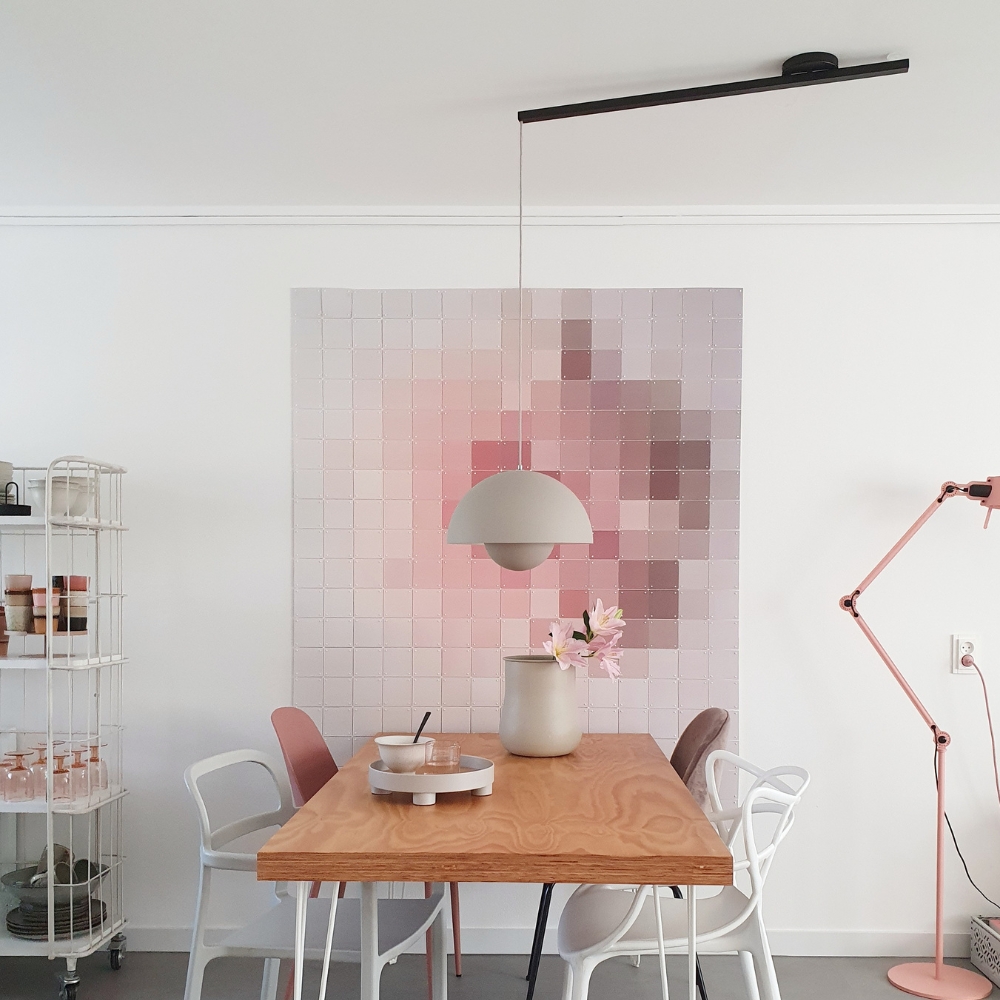
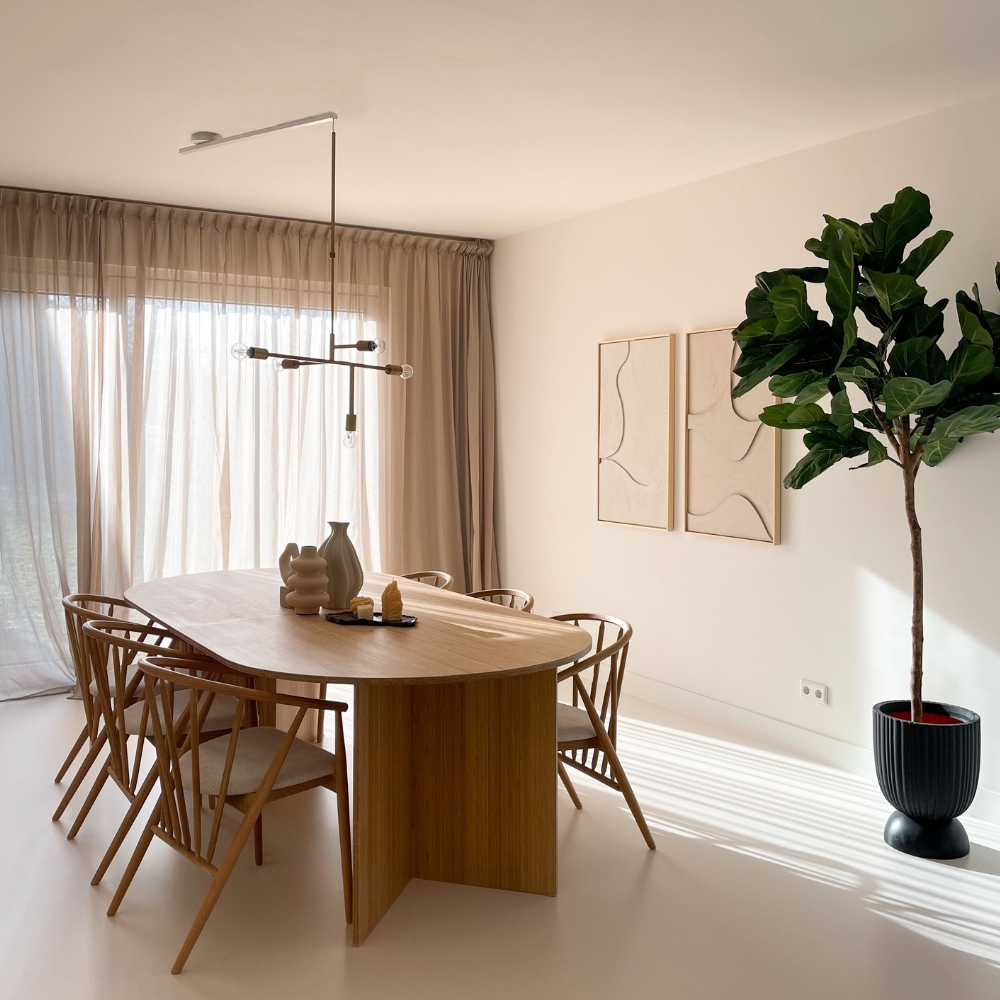
In addition to the mounting spot, it is also important to check whether your ceiling is straight and whether the finish of your ceiling lends itself to a Lightswing® without or with a mounting ring.
Straight ceiling
When you attach the Lightswing® to your ceiling without the mounting ring in between, the Lightswing® is tightly mounted against the ceiling. Does your ceiling slope a little bit or is your ceiling not completely straight here and there? This can cause the Lightswing® to not slide optimally. When you place the mounting ring between the ceiling and the Lightswing®, there is 2 cm between the Lightswing® and the ceiling. For example, it is not a problem if the ceiling is slightly uneven where the suspension system will hang.
Ceiling finish
Often ceilings are nice and sleek and evenly finished. With such a sleek finish, it is often not necessary to use the mounting ring. Depending on where you attach the Lightswing® of course. Do you have a packed ceiling at home? Then it can be nice to mount the Lightswing® with a mounting ring. This way you can be sure that the Lightswing® does not rub along your ceiling.
Whether or not to use the mounting ring depends on where you attach the Lightswing® and on the ceiling to which the system is attached. Would you like to know more about the Lightswing® mounting? Check out our assembly page.